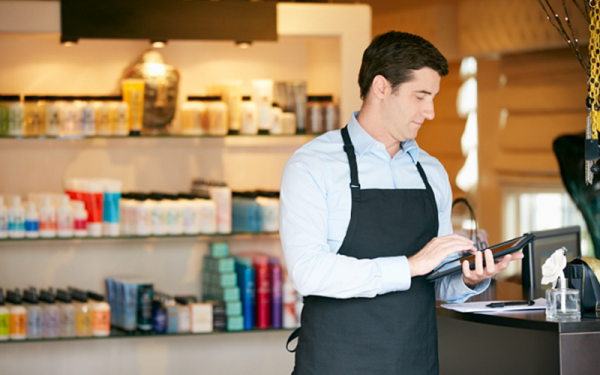By Steve Hanrahan, Business Development Manager, AURES UK
Checkout has traditionally followed a fixed format, regardless of how till technology has evolved in retail. Until very recently customers making any kind of purchase have always been required to go to a fixed location in the store, wait in line and then have the transaction processed and payment taken by a sales assistant.
Things are, however, changing. First came self-checkout, with customers handling their own transactions via a self-service kiosk rather than being helped by a member of staff. Then came self-shopping, a trend growing in popularity in supermarkets and other areas of retail, where shoppers use a hand-held device to scan items as they go. Now there is also growing use of Mobile POS tablets, taking the checkout to the customer.
Given the direction of travel in these POS innovations – cutting out waiting time, creating more fluid and customer-friendly opportunities for transactions, introducing automation and self-service – there is some debate over whether, ultimately, checkout itself will become a thing of the past. Is a world where sales can be logged and payments taken without a defined point of sale really viable in the short to medium term?
Grab and go
A beta version of this very idea is already being tested in the wild. Amazon has now opened six of its ground breaking Go stores in the US using a blend of sensor technology, NFC, mobile wallets and a smartphone app to deliver a ‘grab and go’ no-checkout shopping concept.
Amazon Go stores uses a range of sensors to identify when an item is picked up off a shelf. These communicate with a shopping basket in the Amazon Go app, adding products automatically as the customer shops. When they are finished, there is no need to wait in line or go to a kiosk to make a payment – the shopping basket is linked to a mobile wallet, so payment is automated too. The customer can literally just walk straight out of the store.
From a customer perspective, this sounds perfect – no more queues, no more fiddling around with scanners, no need even to present a card or cash, just a completely seamless shopping experience. It is still far from certain if this represents the future of retail. The technology itself is a long way off mainstream deployment – the sensors alone took four years to develop, and the geofencing required to stop mistakes with items being added to baskets is complex and not fool proof.
There are also questions over whether this kind of approach is even desirable in many retail sectors. While it makes some kind of sense in FMCG, where customers often buy a high volume of goods and service requirements are low, is this how we want the future of fashion retail, or electronic goods, or luxury items to evolve? What difference would stores be able to offer compared to online?
Point of service
Service is increasingly becoming the key value-add stores have to offer to the shopping experience. Rather than driving the end of checkout or point of sale, this is more likely to see POS solutions evolve and even expand to support the continued development of outstanding service.
In the future, it may well be the case that retail businesses routinely operate more than one type of POS in order to meet different customer needs. For those that prefer to take charge of their own shopping journey, self-service kiosks can act not only as checkout points they can also provide an information resource where customers can look up product information at their leisure.
For those that enjoy the personal interaction with a sales assistant to add the human touch to their in-store experience, M-POS solutions provide staff with a flexible, mobile resource which literally allows them to take information to the customer. Equipped with scanners and card readers, they can also be used to process sales there and then, closing the gap between service and transaction.
Removing friction from shopping by making checkout more fluid and straightforward is important, but it remains just one part of delivering a great experience to the customer. Predicting the eventual death of checkout altogether is therefore premature, and POS has a much bigger role to play beyond simple transaction processing.




